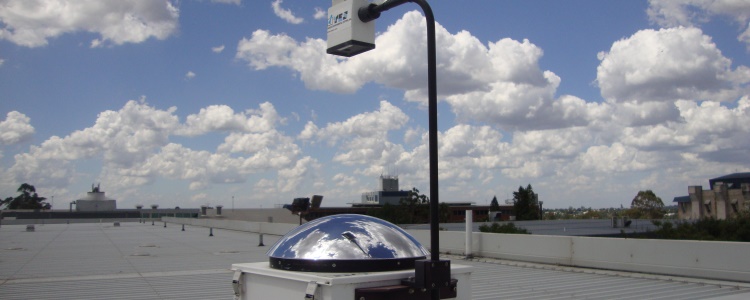
Learning outcomes:
By the end of this activity you should know:
- clouds usually attenuate solar UV radiation, but they can also enhance it
- there is no accurate method to predict how clouds will modify UV levels
- the effect of clouds can be studied using a sky camera and UV meter data.
Solar UV radiation on earth’s surface is strongly affected by cloud cover. Clouds in general reduce solar UV radiation, but specific configurations of clouds can enhance solar UV radiation. Many factors influence the resultant effect of clouds, complicating the prediction of the UV irradiance.
The effect of clouds can be practically investigated by monitoring the sky and measuring UV radiation at the same time; and then comparing the results with clear sky UV levels.
A total sky imager (TSI) designed for long-term measurements is installed on the roof of a USQ building near the UV meters. The TSI captures images from the sky via CCD camera that looks downward on a heated hemispherical mirror. The mirror has a solar-ephemeris guided shadowband to block the reflected intense solar radiation that may damage the camera. The TSI takes a picture of the sky every minute during the day. These images are saved and analysed for percentage cloud cover.

The real-time unprocessed and processed images are shown on this page.
Questions
- Observe the erythemal UV graph shown in the Real-Time Solar UV Data activity page and the concurrent sky images from this activity.
- a) What is the reason for the steady change of the curve observed throughout the day
- b) Provide a possible explanation for any observed fluctuations in the curve.
- Compare the erythemal UV graph of a cloudy day with a graph of a clear sky day and comment on any observed differences.
- Printout one of the unprocessed images of the sky. Develop a method to manually estimate the cloud cover percentage. Compare your result with the calculated percentage accompanied with the image. Discuss the possible source of error for both methods.
